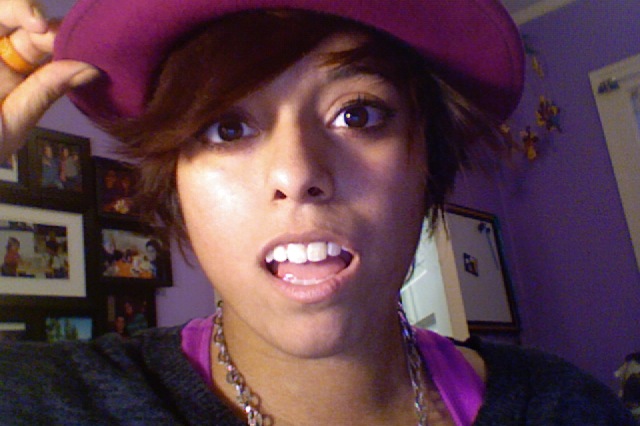|
My Voice - Ani Lund Scleroderma Makes Me Unique
CR: Tell me what it was like when you were first diagnosed with scleroderma? AL: I had discoloration in my hands. They were curling because of the arthritis. They kind of looked like claws; it was really scary. My skin also got really tight. So, I saw my primary doctor first, and she knew what it was right away. She sent me to a dermatologist, who took biopsies of my hand and chest and confirmed that I had scleroderma. CR: What kind of treatments are you on to help with the symptoms of the disease? AL: Right now, I’m on methotrexate, which I inject weekly, but we’re reducing that because I’ve been doing really well recently. I’m pretty much in remission at this time. I did occupational therapy for a while, but I didn’t like it too much. It added more stress because I had to do that along with my schoolwork. But, when I was first diagnosed, it helped me get the motion back in my knees. CR: What have you learned from having scleroderma? AL: I know more about my own strengths, like what I can endure with my pain level. There are so many things that I wouldn’t have learned if I was never diagnosed with this. I definitely know a lot more medical stuff. Another thing is just how close my mom and I are, too. She really helps me through this. I didn’t realize what a good relationship we had until we had to work together so I could get better. CR: Do you find it hard to do certain things that others teens can easily do? AL: In the beginning, I couldn’t run and couldn’t climb. I isolated myself from my friends because I didn’t know how to tell them why I couldn’t do what they were doing. But now, I pretty much do everything. CR: Why was it hard to tell your friends about the disease? AL: It isn’t common in kids, so I felt isolated and a little like I’m the “ugly duckling.” I thought it was so rare and that they wouldn’t understand why I look like I do. CR: What was it like when you finally decided to tell them about it? AL: They were completely understanding. When I was starting to get stares and mean questions at school, I took a picture and I posted it on Facebook. I explained what it was and then people started to understand it. That was when I really started to accept that I have scleroderma, and that I just need to deal with it. CR: Who do you look to for support and guidance? AL: I go to my brother Ben a lot. He’s four years older than I am, but we’ve always been close. Sometimes, I’ll go to my mom for advice. But, most often, I got to my friends. They are so understanding and listen to me talk about what I’m going through. They’ll help me come up with solutions so we can help work it out together. CR: What recommendations do you have for other children and teens who live with scleroderma? AL: It’s easy to say, “Never give up,” but you can’t deny this disease and it can get worse. I’ve known some people who’ve given in and stopped taking medications and going to the doctor. You need to surround yourself with people who will help you. It also helps because then you figure out just how much you are loved, too. CR: What else would you like people to know about how scleroderma has affected your life? AL: Having scleroderma has made me stronger and wiser about doing stuff that other kids my age might experiment with, like drugs and alcohol. With the medication I take, I’m a lot smarter about doing careless things so that’s important. Scleroderma also makes me unique. It’s just a part of my life now that I can’t deny. I just go along with the flow. |
|
|
Back
Understanding Scleroderma
Back
Treating Scleroderma
Back
Living Well with Scleroderma
Back
Advancing Research and Treatment
Back
Get Involved



 Eighteen-year-old Ani Lund of Minneapolis is a senior in
high school. She was diagnosed three years ago with systemic scleroderma. She
also experiences Raynaud Phenomenon and juvenile arthritis. The teen, who loves
to act and write, said, “I just want to have fun and be happy with whatever I’m
doing.” She recently spoke with “Voice” editor Christina Relacion to open up
about her scleroderma story and help other kids, teens and young adults feel
less isolated.
Eighteen-year-old Ani Lund of Minneapolis is a senior in
high school. She was diagnosed three years ago with systemic scleroderma. She
also experiences Raynaud Phenomenon and juvenile arthritis. The teen, who loves
to act and write, said, “I just want to have fun and be happy with whatever I’m
doing.” She recently spoke with “Voice” editor Christina Relacion to open up
about her scleroderma story and help other kids, teens and young adults feel
less isolated.